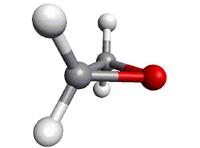|
The analysis and the majority of the transition
frequencies were published by
(1) H. S. P. Müller, J. K. Jørgensen, J.-C. Guillemin,
F. Lewen, and S. Schlemmer,
2023, Mon. Not. R. Astron. Soc. 518, 185.
We also included microwave transition frequencies
from
(2) C. Hirose,
1974, Bull. Chem. Soc. Japan 47, 1311;
and millimeter and far-infrared transition frequencies
from
(3) S. Albert, Z. Chen, K. Keppler, P. Lerch, M. Quack,
V. Schurig, and O. Trapp,
2019, Phys. Chem. Chem. Phys. 21, 3669.
Uncertainties from previous publications were thoroughly
evaluated in (1). Uncertainties in (2) were taken as
50 kHz in keeping with previous studies.
The millimeter transition frequencies from (3) were
stated to be better than 200 kHz; we found
5 kHz to be appropriate. The far-infrared data
required a small recalibration and were used with
0.00008 cm–1 uncertainty.
Only millimeter frequencies from (3) and the present
frequencies were merged.
The calculation should be sufficient for all observational
purposes. Calculated frequencies with uncertainties exceeding
0.1 MHz should be viewed with some caution.
The molecule is chiral, and there are no non-trivial
spin-statistics, in contrast to the main isotopolog.
The partition function takes into account the ground
vibrational state only because the molecule resides in
somewhat colder regions. Excited vibrational states are quite
high; their effect is still modest at room temperature.
The dipole moment was derived in (1) from that of the main
isotopolog published by
(4) G. L. Cunningham Jr., A. W. Boyd, R. J. Myers,
W. D. Gwinn, and W. I. Le Van,
1951, J. Chem. Phys. 19, 676 ;
with its value slightly increased by 0.02 D due
to an updated reference value for OCS as outlined
in
(5) H. S. P. Müller, J. C. Guillemin, F. Lewen,
and S. Schlemmer,
2022, J. Mol. Spectrosc. 384, Art. No. 111584.
|
